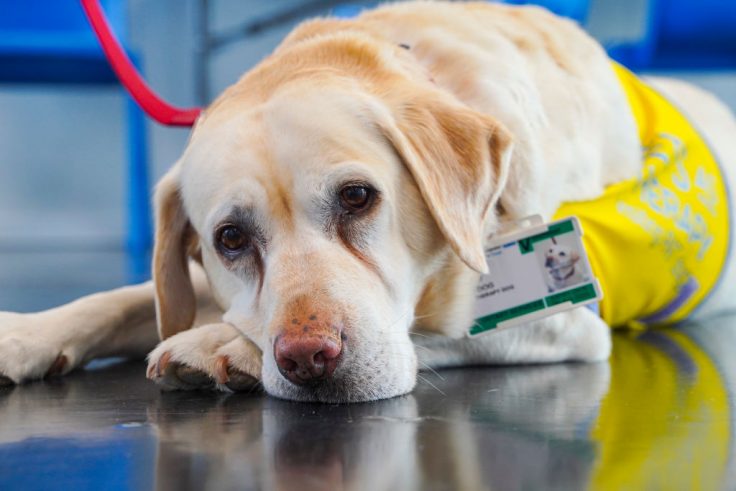State Department employees were so distressed by President Joe Biden’s botched 2021 withdrawal from Afghanistan that the deputy secretary of state, Wendy Sherman, found diplomats working on the evacuation in tears. At Foggy Bottom, leadership sought to ease their pain—by bringing in a therapy dog, according to a new book.
"Afghanistan was a collective trauma for the administration, especially the State Department," writes Atlantic reporter Frank Foer in his new book, The Last Politician, an account of Biden’s first two years in office. "To deal with the trauma, the State Department brought a therapy dog into the building with the hope that it might ease the staff’s pain."
Biden’s rush to evacuate U.S. forces from Afghanistan, which left 13 Americans dead and brought the Taliban back into power, hit the State Department particularly hard, according to Foer, who writes that Sherman "found grizzled diplomats in tears" when she checked on the team responsible for handling the evacuation.
Back in Washington, D.C., according to Foer, veteran State Department employees fell into a deep depression, requiring the therapy dog to cheer them up as Afghanistan devolved into chaos under Taliban control.
"Even in the seat of American power, they felt the shame and anger that comes with the inability to help," Foer writes.
The State Department confirmed therapy dogs visited the department "to give employees a chance to take a break and assist with relieving stress during the workday." The department also deployed mental health professionals across the Middle East including Kuwait, Bahrain, Qatar, and the United Arab Emirates to provide employees "additional mental health and trauma support."
In the two years since Afghanistan fell, Congress has helmed ongoing investigations into the matter and has discovered the Biden administration ignored the warnings of senior military leaders and pushed forward with a rushed evacuation effort that created the conditions for a terrorist bomber to detonate a blast at Hamid Karzai International Airport that left 13 American service members dead.
"There was very little intelligence to suggest the Biden administration’s plan would work and a mountain range of evidence to suggest the plan would fail," retired Col. Seth Krummrich, former chief of staff for special operations at U.S. Central Command, told Congress in July. "The president’s decision to ignore the best military advice and execute an immediate military withdrawal was a shock and a rude awakening for all the planners."
U.S. military snipers stationed at the Afghanistan airport also were denied permission to shoot the terrorist bomber before he carried out the attack, Tyler Vargas-Andrews, a sergeant in the U.S. Marine Corps who was dispatched to Kabul, told Congress in March.
"Plain and simple, we were ignored," Vargas-Andrews said at the time. "Our expertise was disregarded. No one was held accountable for our safety."
Since leaving Afghanistan with the Taliban in control, the Biden administration has provided the country with more than $2.35 billion in taxpayer aid, cash that is likely propping up the terrorist group’s government.
"I cannot assure … the American taxpayer we are not currently funding the Taliban," John Sopko, the special inspector general for Afghanistan reconstruction, told Congress in April, when he accused the Biden administration of stonewalling his investigations into the matter.
